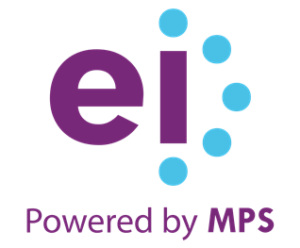Smarter Training For Much Safer Skies
Safety and security is the lifeline of aeronautics. Airline companies and provider today face a complicated internet of regulatory, technological, and functional obstacles. Training is the cornerstone that keeps crews, guests, and assets safe, yet frequently it is fragmented, responsive, and inconsistent.
Recent events, from unfortunate collisions connected to sustain system errors to wheel detachments that compelled emergency landings, and near-misses brought on by fire occasions and drone attacks, highlight the stakes. Compliance alone is no longer sufficient. The market requires smarter, a lot more durable understanding strategies.
Why Aeronautics Demands A Smarter Learning Approach
Governing Intricacy
Aeronautics authorities remain to tighten oversight. In the United States, the FAA has been singing regarding tiredness monitoring and duty-hour limits. European regulators are focused on path safety and incident reporting criteria. Between East, local hubs are under increasing stress to preserve conformity throughout big, quickly broadening fleets. Aligning training with these varied needs is a significant difficulty.
Safety-Critical Precision
Fatigue-related errors, maintenance oversights, and path incursions continue to be relentless threats. With the cost of mistake so high, training should surpass understanding checks to scenario-based practice that constructs real-world preparedness.
Innovation Transformation
AI-enabled website traffic systems, electronic doubles, and advanced aircraft technologies are improving roles across flight and ground procedures. Without agile upskilling, crews might find themselves underprepared for the very systems they should operate securely.
Functional Performance Pressure
Limited turn-around timetables at active European centers or Middle Eastern transit points leave little time for prolonged training. Airlines need modular, workflow-friendly options that lessen downtime without jeopardizing rigor.
Arising Danger Categories
From drone incursions in conflict-adjacent areas to cyberthreats targeting navigating systems, the aeronautics threat landscape is expanding. Training techniques must progress as swiftly as these risks.
Common Training Demands In Air Travel
Security Training
Safety and security is the nonnegotiable foundation of aviation. Programs have to cover both core and advanced practices, ranging from emergency treatments and evacuation drills to situational understanding and occurrence coverage.
Regulative And Conformity Training
Compulsory training courses lined up with FAA, EASA, ICAO, and regional authorities. These consist of recurring training on duty-hour restrictions, devices checks, and dealing with harmful products.
Upkeep And Engineering Training
Hands-on simulations and correspondence course that assist engineers and professionals recognize element fatigue, follow evaluation procedures, and protect against oversights.
Protection And Airspace Security
With drone attacks and regional conflicts affecting global airspace, specialized training is necessary. Center Eastern providers, in particular, face growing demands to address these dangers in fast-expanding operations.
Modern Technology And Solutions Training
Upskilling staff on next-generation airplane systems, AI-enabled traffic tools, and electronic systems that sustain efficiency throughout US and international routes.
Soft Skills And Passenger Experience
Cabin crew and ground team take advantage of training in interaction, dispute administration, and cultural level of sensitivity, making certain guest trust fund and service consistency throughout international centers.
The Path Forward
In aviation, conformity is necessary, but building a culture of security and readiness is what genuinely establishes resilient organizations apart. By investing in targeted, role-specific training that attends to safety and security, conformity, fatigue, maintenance, modern technology, and passenger experience, leaders can ensure uniformity and self-confidence across their workforce.
Whether browsing regulative demands in the United States, handling complex center procedures in Europe, or scaling fleets in the center East, the required is clear: training should develop to match the pace of adjustment in the skies.
The question is no longer whether to improve aviation training. It is just how swiftly leaders can act to shield both individuals and efficiency.
Find out more:
FAQ
Because aviation depends upon stringent adherence to safety and security methods, constant training, and error-free procedures. Without safety, the whole system goes to threat.
Smarter methods like adaptive training, scenario-based knowing, and simulations make certain staff members learn appropriate abilities, use them in real-world contexts, and keep essential security understanding.
Technologies such as Online Fact, AI-driven personalization, and mobile learning give immersive, versatile, and reliable means to train aviation professionals.
They line up training content with worldwide air travel standards and laws, making it simpler for organizations to guarantee compliance while also tracking and auditing knowing results.
Pilots, crew, upkeep staff, air traffic controllers, and ground employees all gain from targeted, role-specific training that decreases human error and enhances safety and security.
The future factors towards continual, technology-enabled learning that adapts to progressing laws, incorporates data-driven understandings, and fosters a society of safety throughout the market.

EI
EI is a mentally smart discovering experience layout company that companions with clients in their Digital Transformation trip.
www.eidesign.net